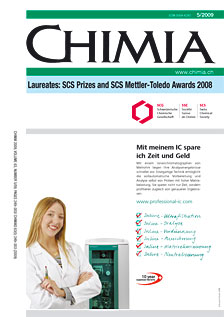Light-Activatable Nucleic Acids 'Caged' at the Nucleobases
DOI:
https://doi.org/10.2533/chimia.2009.261Keywords:
Aptamers, Caged compounds, Light activation, Light trigger, RnaiAbstract
The attachment of photolabile groups to biologically active molecules offers a very versatile way to put a biological effect under the control of an external trigger signal and thus confers spatiotemporal and dose control to this effect. Over the last years we have prepared a number of oligonucleotide derivatives that are modified in such a way. These derivatives are usually referred to as 'caged compounds' and in particular our photolabile 'caging groups' are located at the nucleobases of oligonucleotides so that the Watson–Crick interaction is temporarily impossible. Thus several nucleic acid-based applications have now become controllable with light.Downloads
Published
2009-05-27
Issue
Section
Scientific Articles
License
Copyright (c) 2009 Swiss Chemical Society

This work is licensed under a Creative Commons Attribution-NonCommercial 4.0 International License.
How to Cite
[1]
Chimia 2009, 63, 261, DOI: 10.2533/chimia.2009.261.







